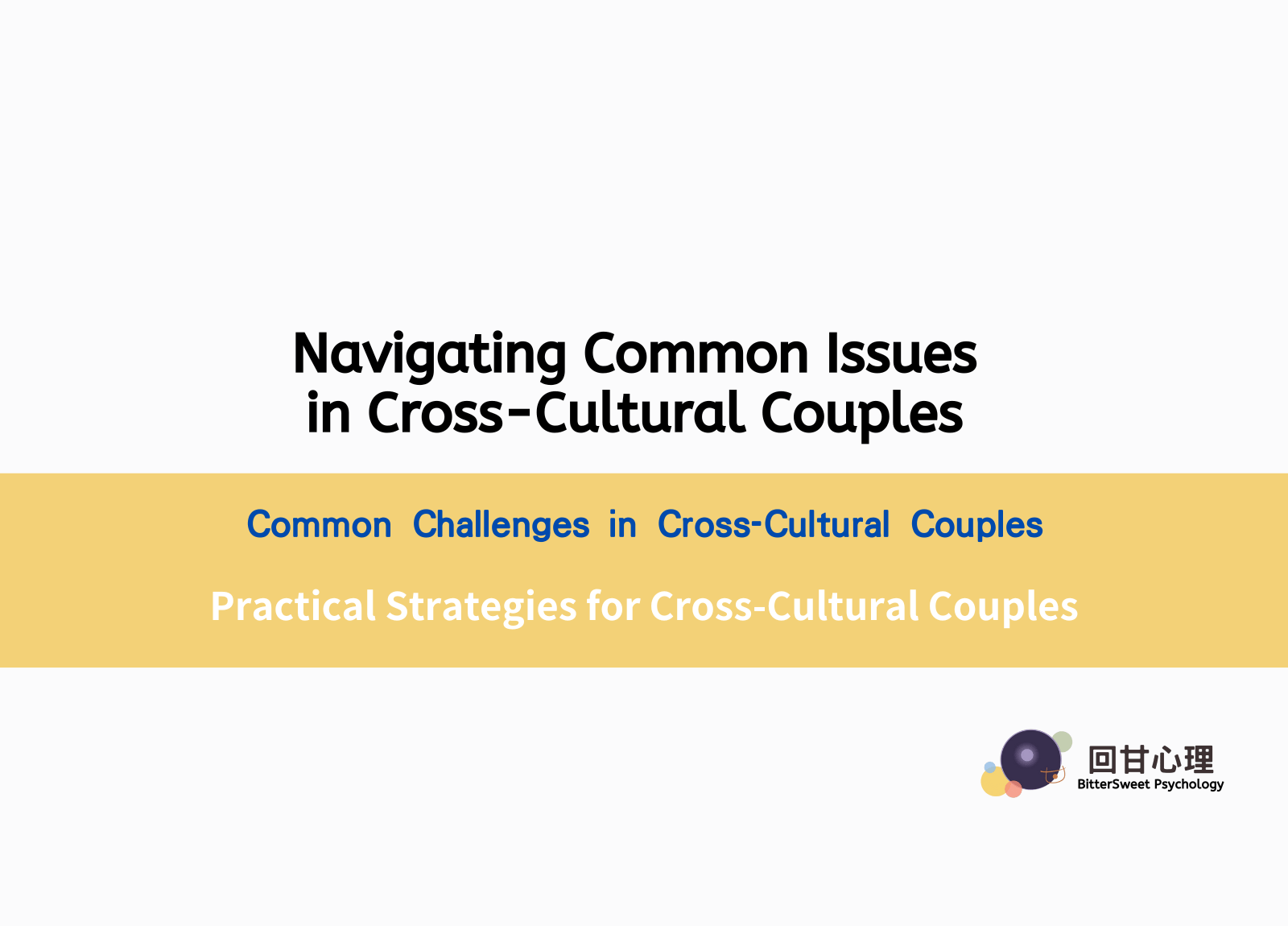In cross-cultural relationships, differences in values, beliefs, and communication styles can add layers of complexity to the relationship. Couples from diverse cultural backgrounds may face unique challenges, including language barriers, conflicting expectations, and cultural misunderstandings. Couple therapy provides a valuable opportunity for these couples, helping them understand the underlying emotional needs behind their struggles and strengthen their connection through empathy and attunement.
Common Challenges in Cross-Cultural Couples
- Differences in Communication Styles: Many cultures have distinct approaches to communication. Some value direct expression, while others prefer indirect methods or nonverbal cues. These differences can lead to misunderstandings, where one partner might interpret indirect communication as evasiveness, or the other might perceive directness as insensitivity.
- Conflicting Family Expectations: Family expectations can vary widely across cultures. In some cultures, family involvement in personal matters is valued, while in others, independence is prioritized. These differences may lead to conflicts over boundaries, family obligations, and lifestyle choices, especially if one partner feels pressured by their family or if the other feels excluded.
- Divergent Beliefs and Values: Core values—such as beliefs around gender roles, parenting styles, or financial priorities—can clash in cross-cultural relationships. For example, one partner might prioritize career advancement, while the other emphasizes family time. These differences can lead to feelings of disconnection if each partner feels misunderstood or invalidated.
- Language and Emotional Expression Barriers: Language can be a barrier not only for everyday conversations but also for expressing emotions. Even when both partners share a common language, subtle nuances might be lost, impacting how they share vulnerability or discuss sensitive topics. Language barriers can make it harder for couples to communicate their deepest emotions, leaving them feeling isolated or frustrated.

Practical Strategies for Cross-Cultural Couples
- Identify and Reframe Cultural Differences as Strengths: Couples can reframe cultural differences as opportunities for growth and connection, rather than obstacles. Instead of seeing differences as potential conflicts, partners can explore how their unique backgrounds enrich the relationship. For example, one partner might teach the other about cultural traditions, fostering curiosity and appreciation for each other’s heritage. By viewing differences as assets, partners can cultivate a deeper sense of respect and curiosity.
- Foster Vulnerable Conversations about Fears and Needs: The importance of discussing underlying emotions needs to be valued in relationship. Cross-cultural couples often face unique fears, such as fear of rejection due to cultural differences or the desire for acceptance from each other’s family. Partners can practice articulating these vulnerabilities openly. For instance, one partner might share, “I worry that my family’s expectations are pushing you away,” while the other might say, “I feel afraid that my background will never be truly accepted by your family.” Sharing these vulnerable feelings can deepen empathy and prevent misunderstandings.
- Learn and Respect Each Other’s Cultural Communication Styles: By learning about the role of directness, indirectness, or nonverbal cues in each other’s culture, partners can become more aware of potential misunderstandings and adjust their responses accordingly. For example, a partner from a culture that values directness may learn to recognize the warmth behind indirect expressions from their partner, while the latter learns to interpret directness as honesty rather than bluntness.
- Create Shared Values and Rituals: Cross-cultural couples can establish new traditions or rituals that blend elements of each partner’s heritage. For example, they might create a routine where they celebrate holidays from both cultures or prepare traditional meals together. These shared practices serve as a tangible reminder of their commitment and help to bridge cultural gaps.
- Practice Empathy and Emotional Validation: In cross-cultural relationships, empathy and validation are crucial. Partners can practice listening to each other’s experiences without judgment, acknowledging their feelings even when they don’t fully understand them. Couples can learn to validate each other’s perspectives by saying things like, “I may not fully understand, but I can see this is really important to you.” This practice helps couples feel emotionally safe, which is vital for navigating the complexities of cultural differences.
- Seek to Understand Each Other’s Cultural Backgrounds: Couples can make an active effort to understand each other’s cultural backgrounds by asking questions, sharing stories, or even attending cultural events together. This fosters a sense of openness and curiosity, helping partners see beyond stereotypes and build a deeper understanding of each other’s experiences. When each partner feels valued and understood, cultural differences are less likely to become a source of conflict.




